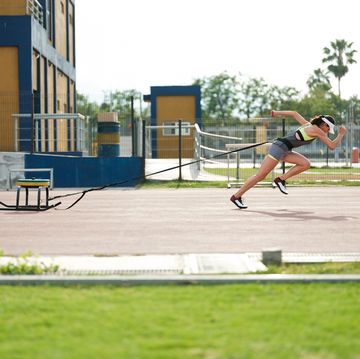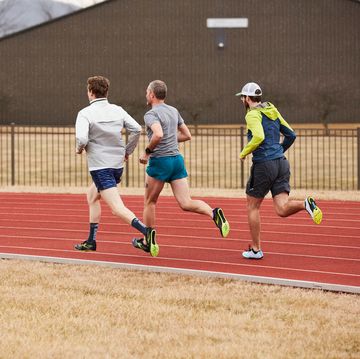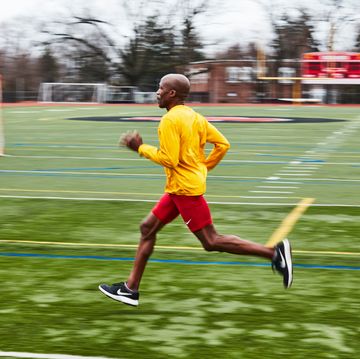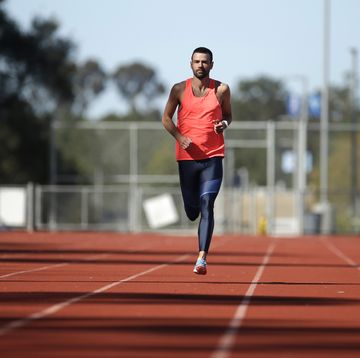When you’re doing an interval session, does it matter how you pace the intervals? Or is your overall power output (or, for runners, overall time) the only thing that matters? A new study from researchers at Murdoch Unviersity in Australia, Health & Injuries, tackles this question with a neat (and gut-busting) workout.
The study involved 15 cyclists doing three variations on a simple workout: 3 x 3:00 hard separated by 3:00 of active recovery. The first version of the workout was “all-out,” meaning that they started each interval as hard as they could and then held on—a very painful way of doing it! The second and third versions of the workout both involved matching the average power output that the subject achieved in the all-out intervals, but doing it with even pacing. (One version required the cyclists to set their own cadences to match the desired power, while the other used a computer to automatically set the power output. The differences between these two protocols were minor, so I won’t go into further detail about them.)
As you’d expect, the power outputs in the all-out intervals tailed off substantially: the first interval averaged 410 watts, the second 356 W, the third 338 W. And within each interval, there was a dramatic tail-off: in the first interval, for example, the first 20 seconds averaged 649 W before tailing off. The even-paced intervals matched the overall averages (410 then 356 then 338), but kept a steady power output throughout each interval.
The net result is that the workouts were “work-matched”—the total amount of work (which is basically power multiplied by time) is the same in each case. But that doesn’t mean the workouts were equally difficult. Perception of effort was much higher after the all-out intervals (18-19 out of 20 on the Borg scale) than in the even-paced efforts (~16 on the Borg scale). And here’s what the oxygen consumption (top) and time spent at above 85% VO2max (bottom) looked like during the all-out (AO) and even-paced (CC is computer-controlled, AC is athlete-controlled) workouts:
So what’s going on? How can the same average power output be harder or easier depending on how you pace it? Here’s what the authors write:
Higher oxygen consumption during the all-out condition may be due to the initial supramaximal sprint effort (e. g. first 30 s) during each interval, resulting in a large oxygen deficit [17] and a compensatory increase in oxygen consumption during the efforts [2]. Furthermore, compared to a slower start, high-intensity sprint efforts are associated with a faster rise in oxygen consumption [6].
Looking at it another way, this is precisely why coaches tell athletes to run their races at an even pace rather than sprinting at the start. Effort versus fatigue is not a linear function. In terms of practical applications, the authors point out that the all-out pacing produces greater time spent above 85% VO2max (the lower of the two graphs above), which is a key driver of endurance adaptations. So in that sense, the all-out workout was “better.” But it was also harder, so it’s not really a fair comparison—you’d need to do an effort-matched trial, with even-paced intervals at 18-19 on the Borg scale, to make that judgment.
That said, I think the all-out approach is an interesting way of producing a physiological—and psychological—stimulus that you don’t often encounter. I know that as a middle-distance runner, the hardest and most stressful part of the race for me was often the first half-lap, which felt way harder and faster than I was ready for. This may be partly because I hadn’t fully optimized my warm-up routine—toward the end of my track days, I started incorporating some more vigorous extended “priming” efforts in my warm-ups (e.g. 2 x 400 at ~10k pace) to get my oxygen kinetics ramped up, which helped to some degree. But it’s also something you might be able to address in occasional workouts. When I trained with Matt Centrowitz’s group, he sometimes had us do Best Compression Socks. It’s not an “every week” kind of thing, but perhaps it has a place.
* * *
Read Different Types of Runs Every Runner Should Know, and follow the latest posts via Twitter, Facebook, or RSS.














